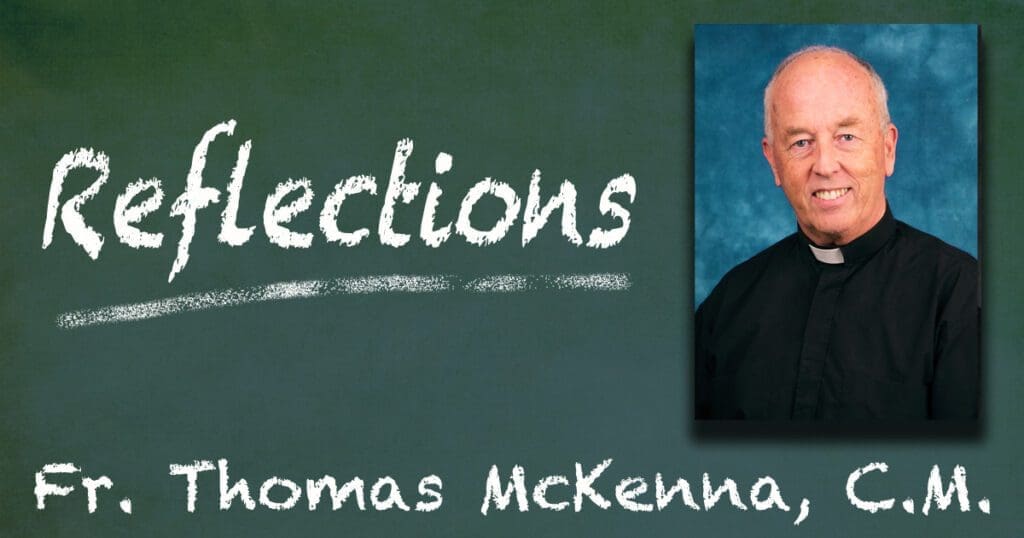The Scriptures are filled with striking visuals for our lives of faith, and in particular for our lives of prayer.

One is in chapter 19 of the Book of Kings, up on the mountain with the Prophet Elijah who is fleeing from the threats of Jezebel and her husband King Ahab who are out to punish him. In that dangerous and tense atmosphere, he turns to God and prays. However, God communicates with him in a way you might not suspect. The Divine Voice comes not through the rock-smashing wind or blazing fire or rumbling earthquake — but arrives in a tiny whisper. To detect that murmur, Elijah has to quiet himself, step back from all the clamor and listen for that that indistinct sliver of a sound. The formula: settle down and receive…
This is a soft but vivid visual for coming before God. All alone, sitting in silence, listening for God’s Holy Spirit, waiting peacefully and patiently for that hushed whisper to come through.
A contrasting “prayer-scape” arises in the watery maelstrom of Matthew’s 14th chapter. The lake storm is raging, and striding through it is Jesus, walking on the water. An agitated St. Peter asks if he could leave his boat and accompany the Lord on those waves. Jesus agrees, but a few steps into it Peter panics, rigid with fear that he’ll be sucked into the foaming surf. Intensely frightened, the Apostle cries out, “Lord, Save Me!” In an instant, Jesus stretches out his hand and grabs hold of this drowning man.
This second prayer-visual contrasts with the first: someone breathlessly shouting out to be saved. Isn’t this recognizable too in our lives with God, some circumstance when all seems lost and in desperation we reach for that steadying hand? Then, in what can feel like forever, we sense it grabbing hold and pulling us back into the boat. This is prayer in duress, something most all of us can remember, us pleading for that strong arm to lean over and grab hold of our trembling selves.
The idea is to bring up scenes like these when praying in various situations. Use these and so many other Bible scenes as portraits, employable visuals for how to come before our God in the ups and downs of life. Pictures reach deeper inside than words, images resonate more loudly in our hearts and souls.
Scriptural scenes can usher us into many prayer locations, up there in the silence of the mountain, down there in the storms on the lake– and in so many other places in life which bring us before the Lord, who forever reaches out.
Vincent continually references Scripture. Particularly in his Common Rules does he bring in the gospels.
“We read in Sacred Scripture that Our Lord Jesus Christ, sent on earth for the salvation of the human race, did not begin by teaching; He began by doing. And what He did was to integrate fully into His life every type of virtue. He then went on to teach, by preaching the good news of salvation to poor people, and by passing on to His Apostles and disciples what they needed to know to become guides for others.” (Volume: 13a | Page#: 431) Common Rules of the Congregation of the Mission, 17 May, 1660 added on 6/28/2011





0 Comments